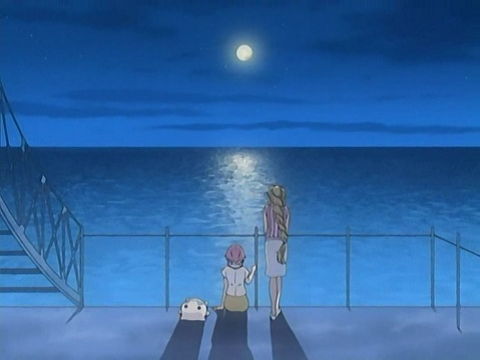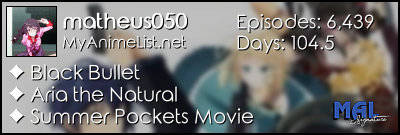Aria is truly magical. It really is. The soft pastels and the tranquil music blend so well with the laid back atmosphere, and all the sappy monologues are so well balanced with the quick comedic skits and brief moments of tension, of which are done to give just that little bit of drama to give the episode a little bit of diversity in tone.
I love the opening. It plays over the episode itself, becoming part of the anime and making each opening unique unto themselves. Plus, all the vignettes provide so much world building, giving glimpses into the lives of the various citizens and workers. These are then augmented by the tour, which further explain the world through conversational dialogue rather than simply speaking about such details directly to the viewers. This truly is an animated travel brochure of the happiest place in the universe.
The architecture is amazing. It's spectacular to see a recreated version of Venice, idealized to become a tourist hotspot. This actually speaks to an aspect of destination tourism, where the best parts of a location are accentuated through advertisement. Neo-Venezia recreates the look of the rustic-feeling Renaissance-era city, full of its mix of Gothic, Classical and Baroque styles detailed enough to actually call out. However, it still has elements of futuristic technology, but the anime is brilliant in how it preserves the old aesthetics while still retaining the benefits of technology to communicate and travel around. The city maintains its facade in front of tourists, but still has the conveniences of its contextual modern-day technology. It really provides a lot of lessons to real life cities trying to bank off of nostalgia in its tourism.
In preserving or referencing older eras, questions of authenticity arise. For example, why would someone visit the Venetian Hotel and Casino in Las Vegas when they could just go to the actual Venice in Italy? However, is the real Venice the same Venice as it's portrayed in films such as Indiana Jones and the Last Crusade (1989) or the Casino Royale (2006)? Or, is it the same Venice that is portrayed through multimedia formats as seen through tourist websites and general Google searches? How much of Venice's crime and unemployment is advertised? What about the city's flooding and sinking problems, or the levels of canal pollution? Such details are sidestepped, as these behind-the-scenes information isn't part of Venice's framed image. And, as such, Aria's world of Neo-Venezia equally excludes such details from its aesthetic. In fact, due to the world being fictional, it's possible to omit such details as they're not part of the narrative.
As fans, we can make observations, but that's on us to decide how real we'd want to individually make Neo-Venezia. From what is portrayed, for all we know, the buildings could be cardboard popouts hiding wires and lightbulbs behind every stone veneer, but like a tourist, the viewer is ushered into the series on rails, looking at the city from the anime's camera. It really drives the guided tour metaphor home, and the episode makes great use of it to slowly introduce viewers to the world. We're made to look at what the anime decides is the best way to experience the city, and even if it's a fabricated experience, it's all worth if so long as the experience supercedes reality. In a way, it's an argument for the fictionalized portrayal of subjects in terms of tourism, fiction, and anime. While it may be false, so long as the viewer gains something more out of the experience, it's still a worth the time and monetary investment, both from the creator and consumer sides.
But, alas, I digress. The anime is, for now, a simple show about cute girls living peacefully in a futuristic rendition of its real-world counterpart. It's also, for now, the best slice-of-life and my favorite anime that I've seen thus far, despite this only being episode 1. Hopefully the rest of the anime continues in its quality. |

















